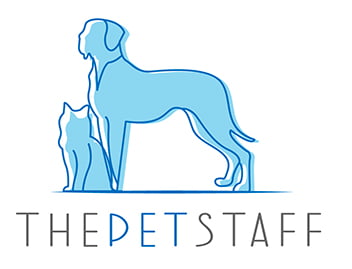The Belgian Tervuren is an impressive herding breed recognized for its intelligence, agility, and steadfast loyalty. With their striking mahogany coat, black mask, and regal presence, Tervurens are often mistaken for smaller German Shepherds. But this breed stands out with its unique elegance and work ethic blend. Originally bred for herding and guard dogs, Tervurens excel in various roles, including obedience, agility, and search-and-rescue. They thrive in active households and form strong, lasting bonds with their families.
In this guide, we’ll explore Belgian Tervuren's history, temperament, care needs, and why the Belgian Tervuren is a perfect match for dedicated dog lovers.
Breed Characteristics
Temperament | Intelligent, alert, protective |
Intelligence | High |
Affection/Friendliness | Loyal, affectionate with family |
Trainability | high |
Mental Stimulation | High – herding, agility, obedience, puzzle games |
Exercise Needs | High – running, hiking, herding, active play |
Apartment Living | not suitable |
Family Friendly | Yes, with training |
Pet Friendly | Moderate, early socialization needed |
Drooling Level | low |
Energy Level | high |
Loneliness Tolerance | low |
Adaptability | Moderate |
Tendency to bark | high |
Origin
The Belgian Tervuren, one of the four Belgian Shepherd breeds, was developed in Belgium in the late 19th century. Named after the village of Tervuren, this dog breed was developed to herd livestock and guard farms. Alongside the Malinois, Laekenois, and Groenendael, the Tervuren was distinguished by its long, luxurious mahogany coat and black mask. Early breeders prioritized intelligence, agility, and adaptability, traits that made the Tervuren excel as herding dogs and in police work, military roles, and dog sports.
The breed is widely acknowledged by prominent kennel clubs, including the American Kennel Club (AKC), the United Kennel Club (UKC), and the Fédération Cynologique Internationale (FCI). These organizations celebrate the Tervuren’s versatility, elegance, and working heritage, solidifying its place as a beloved and respected breed worldwide.
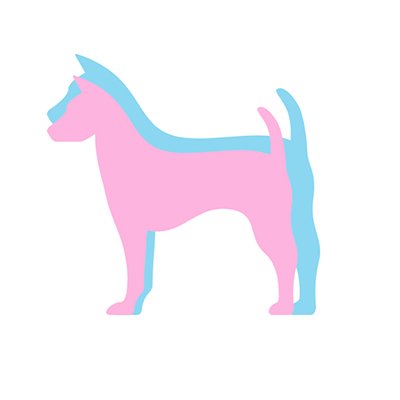
Breed Overview
Height: 24–26"
Weight: 55-75 lbs
Height: 20-25"
Weight: 45–60 lbs
Breed Group
Herding
Life Span
12–14 years
Coat
Double coat
Coat Length
Long
Hypoallergenic
No
Shedding Level
High
Size
The Belgian Tervurens are medium to large breed dogs known for their elegant and athletic build. On average, male dogs stand 24 to 26 inches tall at the shoulder and weigh 55 to 75 pounds. Females tend to be a bit smaller, generally measuring 22 to 25 inches in height and weighing between 45 to 60 pounds. Both genders are well-proportioned, with a strong, muscular frame that reflects their herding and working heritage.
Personality
The Belgian Tervuren is a breed that combines intelligence, energy, and loyalty into a dynamic personality. Known for their sharp minds, Tervurens are highly trainable and excel in tasks challenging their intellect, such as obedience, agility, and herding. They have a high energy level, needing ample physical and mental engagement to remain content and well-behaved.
Tervurens are naturally alert and confident, making them excellent watchdogs. They tend to bark to alert their owners of anything unusual, but when properly trained, they are not excessive barkers. Protective yet not overly aggressive, they are devoted to their families and can be reserved with strangers, though they warm up with proper socialization.
Tervurens are affectionate with their family and thrive on companionship. They can develop separation anxiety if left alone for extended periods. They are not overly independent, preferring to work closely with their owners. While generally not aggressive, their herding instincts may surface, especially around children or other pets. The Belgian Tervuren becomes a loyal, confident, and loving companion with proper training and socialization.
Temperament
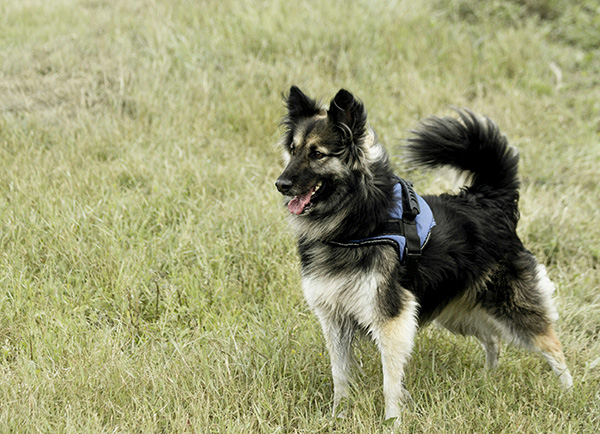
The Belgian Tervuren breed has a complex and dynamic temperament, blending intelligence, loyalty, and a strong work ethic. While deeply devoted to their families, their attitudes toward other pets, strangers, and children can vary based on socialization and training.
Tervurens are generally friendly with other dogs, primarily if raised together, but their herding instincts may lead them to try to "manage" other pets, including cats. Early socialization is essential for helping them live harmoniously with others. Tervurens are typically reserved and cautious around strangers, which makes them excellent watchdogs. While not naturally aggressive, they may need time to adjust to new people.
When it comes to children, Tervurens can be wonderful companions for families, mainly if raised with kids. Due to their high energy and herding instincts, they may attempt to nip or herd small children while playing. Supervision and training are crucial to ensure safe interactions.
Diet/ Nutritional needs
The Belgian Tervuren is an active, high-energy breed with specific dietary needs to support its athletic lifestyle. Belgian Tervuren needs high-quality dog food to complement their active lifestyle. A balanced diet rich in high-quality protein is essential to maintain muscle mass and energy levels. Choose dog food that lists real meat as the main ingredient, with healthy fats like omega-3 and omega-6 fatty acids for a shiny coat. Complex carbs like sweet potatoes or brown rice offer lasting energy, while essential vitamins and minerals contribute to overall well-being. Portion control is crucial to avoid obesity, as Tervurens can gain weight if overfed. Always consult your veterinarian to adjust their diet according to their age, activity level, and health requirements.
Activity/ Exercise
The Belgian Tervuren is a high-energy, athletic breed that thrives on physical and mental stimulation. Bred for herding and working, they require at least 1-2 hours of vigorous exercise daily to stay happy and healthy. Activities such as running, hiking, agility training, or playing fetch are perfect for burning off their excess energy.
Mental stimulation is just as crucial for this intelligent breed. Puzzle toys, obedience training, or dog sports like herding, tracking, or flyball can engage their sharp minds. Without enough activity, Tervurens can become bored and may exhibit destructive behaviors.
This breed best suits active households or individuals who enjoy outdoor adventures and can provide consistent, structured exercise. A properly exercised Tervuren is a happy and well-mannered companion.
Appearance/ Colors
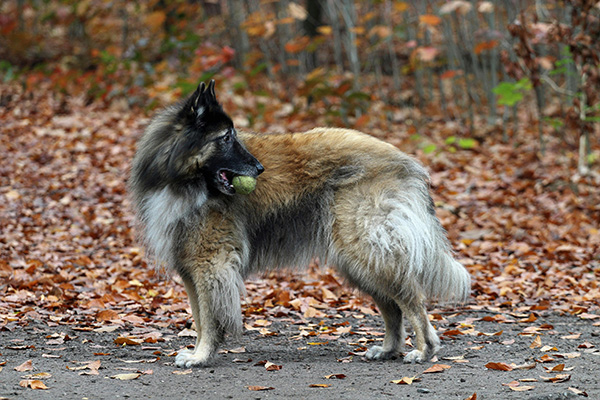
The Belgian Tervuren is a beautifully graceful breed, admired for its dignified appearance and rich, luxurious coat. It looks very similar to Belgian Shepherd Dog; Belgian Tervuren has a well-proportioned, athletic build, standing 22-26 inches tall, with a proud posture and graceful movement. Their most distinctive feature is their long, double-layered coat, which is thick and weather-resistant. The outer coat is straight and full, while the undercoat is soft and dense.
Tervurens are most commonly seen in rich shades of mahogany or fawn, with black tipping that creates a stunning overlay. Their face typically features a black mask extending to the ears and muzzle, adding to their expressive and alert appearance. The breed also has a plumed tail and feathering on the legs, chest, and ears, enhancing their overall elegance. Their almond-shaped, dark brown eyes exude intelligence and warmth, completing their captivating look.
Grooming needs
The Belgian Tervuren’s thick double coat demands consistent grooming to stay healthy and tang-free. With long, dense fur that easily mats, brushing 2-3 times a week is key to removing loose hair, dirt, and debris. Daily brushing may be necessary to manage increased hair loss during shedding periods, usually in spring and fall. A slicker brush or undercoat rake reaches the dense undercoat and prevents mats. Bathing should occur every 6-8 weeks or as needed, using a gentle dog shampoo to preserve the coat's natural oils. Regular nail trimming, ear cleaning, and dental care are also crucial for overall grooming. While their grooming needs are moderate, the effort pays off in maintaining their stunning appearance and overall health.
Adaptability
The Belgian Tervuren is a highly adaptable breed, but their adaptability depends heavily on their environment and lifestyle. They excel in environments with plenty of physical and mental engagement, making them ideal for active families or individuals who enjoy outdoor pursuits. Although they can adjust to different living spaces, including apartments, they thrive in homes with a securely fenced yard where they can release their energy.
Tervurens are sensitive to changes in routine and may struggle in chaotic or inconsistent environments. They prefer cooler climates due to their thick double coat, but they can adapt properly to warmer regions. Early socialization is crucial for helping them adjust to new people, pets, and environments, making them more well-rounded companions. However, their high energy and intelligence demand regular mental and physical stimulation to avoid boredom or anxiety. With the right balance of exercise, training, and attention, the Belgian Tervuren can adapt to various lifestyles while remaining a loyal and devoted family member.
Trainability
The Belgian Tervuren is a highly trainable breed, renowned for its intelligence, eagerness to please, and quick learning ability. Originally bred for herding and working, they excel in obedience, agility, and advanced training. Their keen intelligence thrives on mental stimulation, making them perfect for dog sports, search-and-rescue missions, and even service roles.
Tervurens respond most effectively to positive reinforcement techniques like treats, praise, and play, as they thrive on consistent encouragement. Harsh training methods may cause resistance or anxiety, so it's vital to use patience and maintain a calm, confident demeanor. Early socialization and puppy training are essential for fostering good behavior and adaptability.
While their trainability is a strength, their high energy and intelligence require regular mental stimulation to stay engaged. Without proper stimulation, Tervurens may become bored and exhibit unwanted behaviors. With the appropriate guidance, the Belgian Tervuren is a joy to train and a testament to the power of a well-rounded, motivated canine companion.
Life expectancy
The Belgian Tervuren is a robust and durable breed, typically 12 to 14 years old, although some may live even longer with proper care.
Cost
The price of a Belgian Tervuren can vary significantly based on factors such as the breeder's reputation, pedigree, and location. A well-bred puppy from a reputable breeder typically costs between $1,500 and $3,000. Dogs with show-quality traits or from champion bloodlines may be priced higher. Additionally, initial expenses like vaccinations, spaying/neutering, and supplies can add $500 to $1,000 to your budget. However, rescue dogs or shelters are a more affordable option for this breed, typically costing $200 to $500, often including vaccinations and spaying/neutering. Rescue organizations may also have adult Tervurens in need of loving homes.
If you're considering purchasing or adopting a Belgian Tervuren, visiting the American Belgian Tervuren Club for trusted recommendations is a good idea. The American Belgian Tervuren Club (ABTC) is the official breed club for Belgian Tervurens in the United States, dedicated to preserving, promoting, and protecting the breed. The ABTC provides resources for owners, breeders, and enthusiasts, including health information, breed standards, and events like dog shows, herding trials, and obedience competitions. They also emphasize responsible breeding practices and support rescue and rehoming efforts, making them a valuable resource for anyone interested in this versatile and elegant breed.
Potential Health Issues
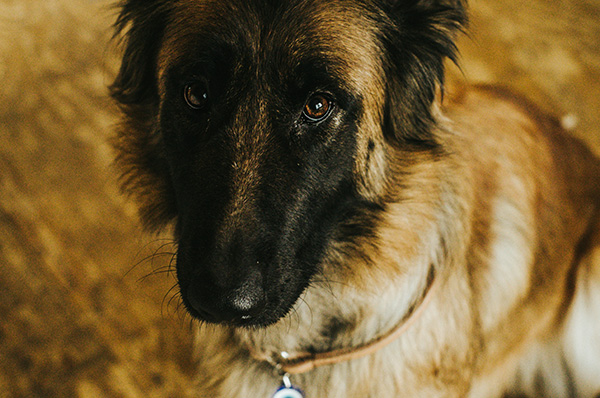
Belgian Tervurens are generally healthy dogs, but, like all breeds, they may be susceptible to certain genetic and breed-specific health conditions. Here are some issues to watch out for:
Hip Dysplasia
Hip dysplasia is a common orthopedic condition in Belgian Tervurens, where the hip joint doesn’t fit properly into the socket, leading to wear and tear over time. This can result in pain, stiffness, and arthritis, particularly as the dog ages. Signs of the condition may include trouble getting up, hesitancy to jump or navigate stairs, and an obvious limp. While genetics are a key factor, issues like fast growth, obesity, and overexertion during puppyhood can worsen the problem. Treatment options vary from weight control and physical therapy to surgery in more serious cases. Responsible breeders screen for hip dysplasia through X-rays and certifications, so always ask for proof of testing when purchasing a puppy.
Elbow Dysplasia
Elbow dysplasia is another joint concern that impacts the front legs of Belgian Tervurens. It happens when the bones in the elbow joint grow abnormally, causing pain, lameness, and the potential for arthritis. Symptoms often appear during puppyhood or early adulthood and may include limping, stiffness, or a reluctance to exercise. Treatment varies based on the severity of the condition and may involve weight management, anti-inflammatory drugs, physical therapy, or surgery. Like hip dysplasia, elbow dysplasia has a genetic link, making it essential to select a breeder who tests their breeding dogs for this issue.
Progressive Retinal Atrophy (PRA)
Progressive retinal atrophy (PRA) is a genetic eye condition that causes the gradual deterioration of the retina, ultimately resulting in blindness. Symptoms typically start with night blindness and progress to complete vision loss. Unfortunately, PRA has no cure, but genetic testing can detect carriers and affected dogs, allowing breeders to make more informed breeding choices. Regular eye exams by a veterinary ophthalmologist can help detect the condition early, allowing owners to prepare and adapt their home environment to support a visually impaired dog.
Cataracts
Cataracts are another eye condition that can impact Belgian Tervurens, leading to cloudiness in the lens and vision impairment. While some cataracts are small and don’t significantly affect vision, others can grow and lead to blindness. Cataracts can be inherited or develop due to aging, diabetes, or injury. Surgical removal is often an effective treatment to restore vision. Regular eye check-ups are essential for detecting cataracts and other potential eye problems.
Epilepsy
Epilepsy is a neurological condition that leads to recurring seizures in Belgian Tervurens. Seizures range from mild (brief staring spells) to severe (full-body convulsions). While the exact cause of epilepsy is often unclear, it is thought to have a genetic basis. Treatment usually includes anticonvulsant medications to help control the frequency and intensity of seizures. Although epilepsy cannot be cured, most dogs can live happy lives with proper management and regular veterinary care.
Thyroid Disorders
Hypothyroidism is a common thyroid condition in Belgian Tervurens, occurring when the thyroid gland doesn't produce sufficient hormones. Signs include weight gain, lethargy, hair thinning, dry skin, and sensitivity to cold. Diagnosis is made through blood tests, and it is usually treated with daily hormone replacement medication. With proper treatment, affected dogs can lead normal, healthy lives. Regular veterinary check-ups are crucial for monitoring thyroid levels and adjusting medication when necessary.
Allergies
Belgian Tervurens can develop allergies, which may be triggered by environmental factors (pollen, dust, mold), food ingredients, or flea bites. Symptoms often include itching, redness, skin infections, ear infections, and digestive issues. Determining the specific allergen can be difficult and might involve elimination diets or allergy testing. Treatment options include antihistamines, medicated shampoos, hypoallergenic diets, and, in some cases, immunotherapy. Consistent grooming and flea prevention can also assist in controlling allergy symptoms.
Bloat (Gastric Torsion)
Bloat, also known as gastric torsion, is a potentially fatal condition affecting Belgian Tervurens due to their deep-chested body structure. It happens when the stomach becomes distended with gas and rotates, disrupting blood flow and leading to shock. Common signs of bloat include a swollen abdomen, anxiety, excessive drooling, and nonproductive vomiting. Immediate veterinary care is essential, often involving surgery to untwist the stomach and prevent it from happening again. To minimize the risk, feed your Tervuren smaller, more frequent meals, avoid intense physical activity right after eating, and be cautious when using elevated feeding bowls.
